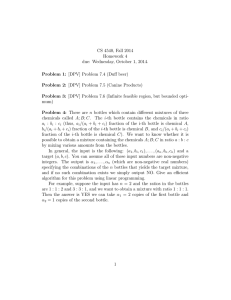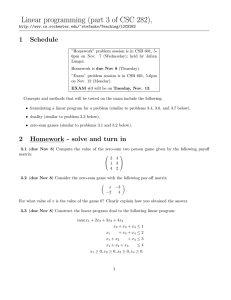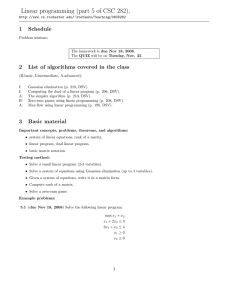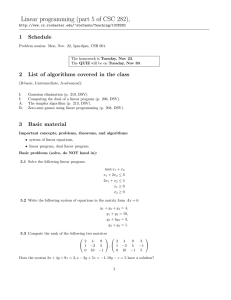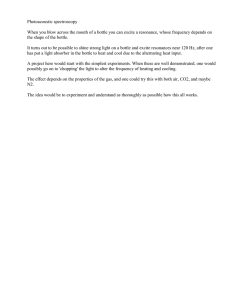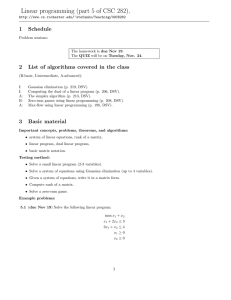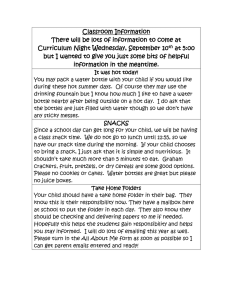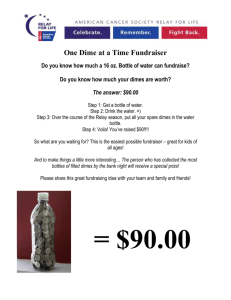CS 282, Handout 12, Nov 21, 2006
advertisement
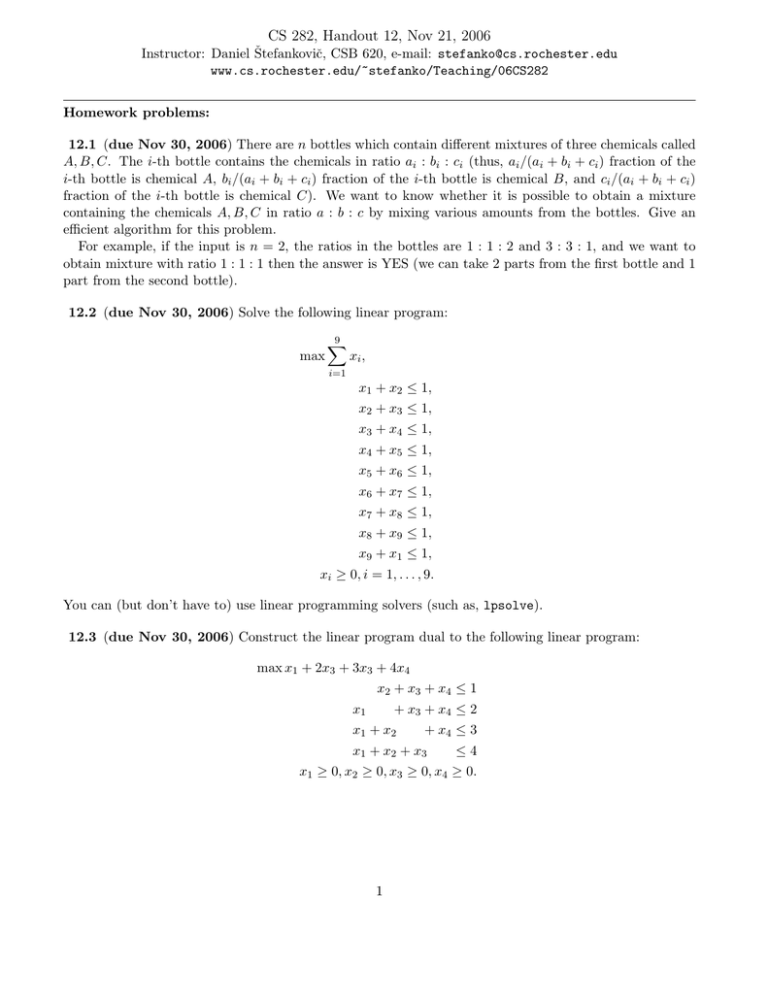
CS 282, Handout 12, Nov 21, 2006 Instructor: Daniel Štefankovič, CSB 620, e-mail: stefanko@cs.rochester.edu www.cs.rochester.edu/~stefanko/Teaching/06CS282 Homework problems: 12.1 (due Nov 30, 2006) There are n bottles which contain different mixtures of three chemicals called A, B, C. The i-th bottle contains the chemicals in ratio ai : bi : ci (thus, ai /(ai + bi + ci ) fraction of the i-th bottle is chemical A, bi /(ai + bi + ci ) fraction of the i-th bottle is chemical B, and ci /(ai + bi + ci ) fraction of the i-th bottle is chemical C). We want to know whether it is possible to obtain a mixture containing the chemicals A, B, C in ratio a : b : c by mixing various amounts from the bottles. Give an efficient algorithm for this problem. For example, if the input is n = 2, the ratios in the bottles are 1 : 1 : 2 and 3 : 3 : 1, and we want to obtain mixture with ratio 1 : 1 : 1 then the answer is YES (we can take 2 parts from the first bottle and 1 part from the second bottle). 12.2 (due Nov 30, 2006) Solve the following linear program: max 9 X xi , i=1 x1 + x2 ≤ 1, x2 + x3 ≤ 1, x3 + x4 ≤ 1, x4 + x5 ≤ 1, x5 + x6 ≤ 1, x6 + x7 ≤ 1, x7 + x8 ≤ 1, x8 + x9 ≤ 1, x9 + x1 ≤ 1, xi ≥ 0, i = 1, . . . , 9. You can (but don’t have to) use linear programming solvers (such as, lpsolve). 12.3 (due Nov 30, 2006) Construct the linear program dual to the following linear program: max x1 + 2x3 + 3x3 + 4x4 x2 + x3 + x4 ≤ 1 + x3 + x4 ≤ 2 x1 x1 + x2 + x4 ≤ 3 x1 + x2 + x3 ≤4 x1 ≥ 0, x2 ≥ 0, x3 ≥ 0, x4 ≥ 0. 1
